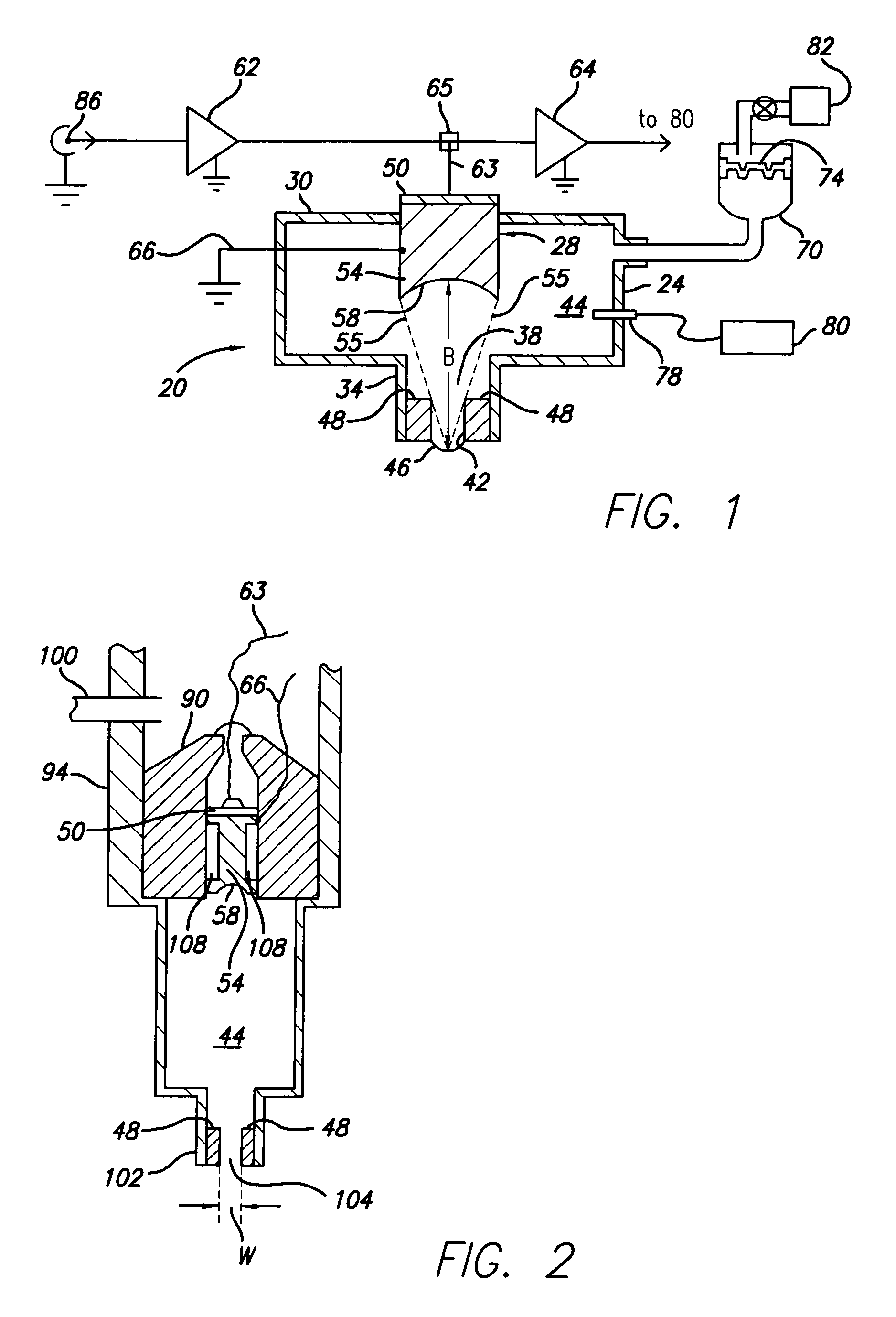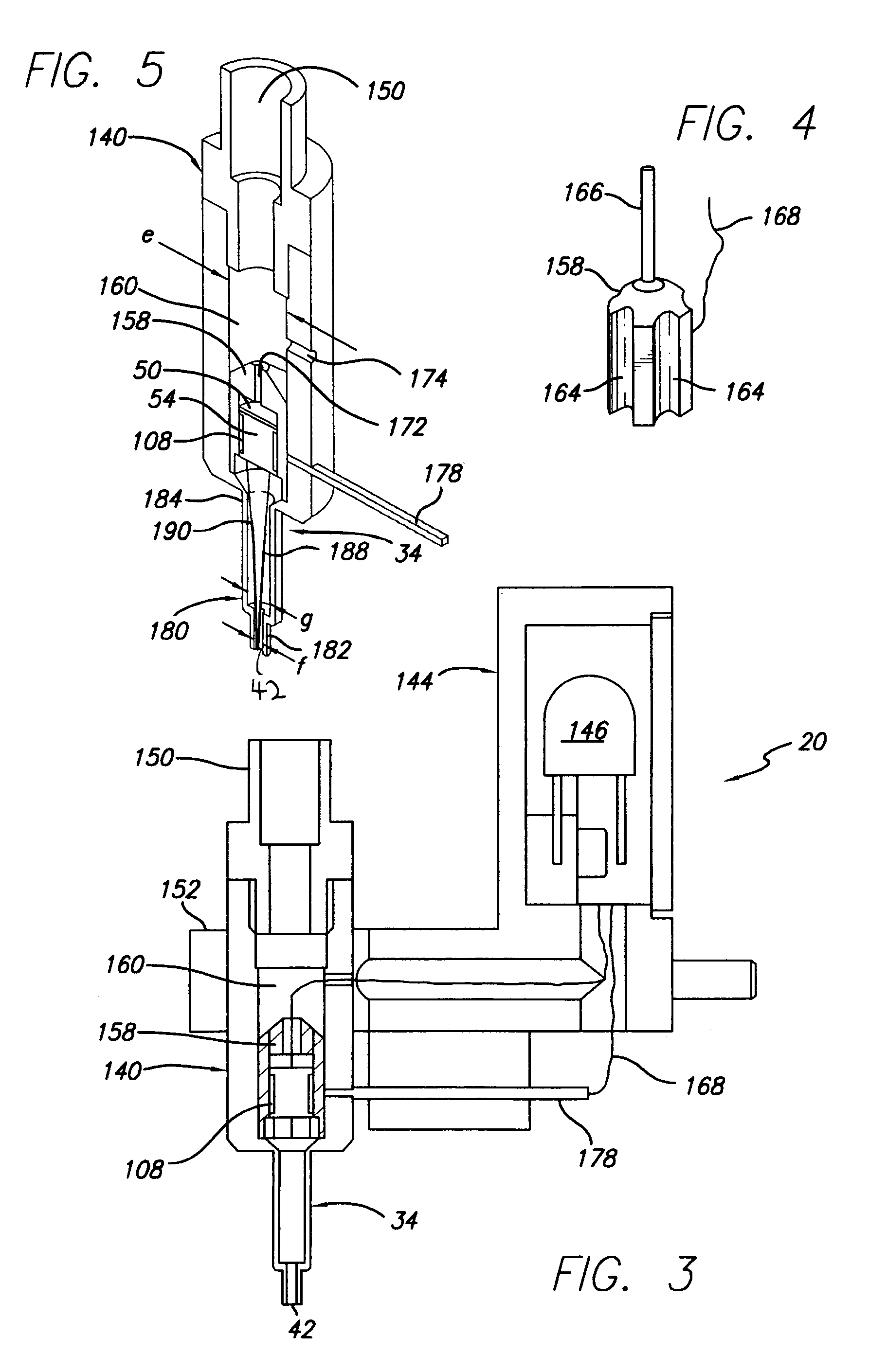Acoustic liquid dispensing apparatus
a liquid dispensing and acoustic technology, applied in the direction of instruments, heat measurement, specific gravity measurement, etc., can solve the problems of increasing the risk of contamination of the source liquid and/or its deposition interface, increasing the likelihood of contamination, and particularly problematic cross-contamination, etc., to accurately know the distance from the free surface
- Summary
- Abstract
- Description
- Claims
- Application Information
AI Technical Summary
Benefits of technology
Problems solved by technology
Method used
Image
Examples
Embodiment Construction
[0029]The following detailed description should be read with reference to the drawings, in which identical reference numbers refer to like elements through out the different figures. The drawings, which are not necessarily to scale, depict selective embodiments and are not intended to limit the scope of the invention. The detailed description illustrates by way of example, not by way of limitation, the principles of the invention. This description will clearly enable one skilled in the art to make and use the invention, and describes several embodiments, adaptations, variations, alternatives and uses of the invention, including what is presently believed to be the best mode of carrying out the invention.
[0030]Before describing the present invention, it is to be understood that microarray printing is used herein as an exemplary application, and it is not intended to limit the scope of the application. In light of the disclosure herein, one of ordinary skill in the art would appreciat...
PUM
 Login to View More
Login to View More Abstract
Description
Claims
Application Information
 Login to View More
Login to View More - R&D
- Intellectual Property
- Life Sciences
- Materials
- Tech Scout
- Unparalleled Data Quality
- Higher Quality Content
- 60% Fewer Hallucinations
Browse by: Latest US Patents, China's latest patents, Technical Efficacy Thesaurus, Application Domain, Technology Topic, Popular Technical Reports.
© 2025 PatSnap. All rights reserved.Legal|Privacy policy|Modern Slavery Act Transparency Statement|Sitemap|About US| Contact US: help@patsnap.com



